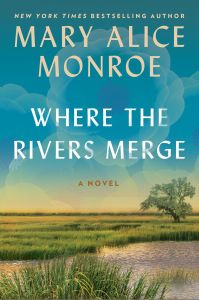Where the Rivers Merge: Belle Baruch and the Wild Heart of Hobcaw Barony
When I set out to write about South Carolina’s rollicking, roaring 1920s and ’30s, I knew I had to begin earlier.
The year was 1908. The tide was shifting—not only in the cobbled streets of Charleston, but across the vast, rural lowlands where rice plantations once stretched like emerald quilts, stitched together by hand-dug dikes and tidal creeks. These lands, once ruled by a planter aristocracy, had fallen into ruin after the Civil War. And as the land went fallow, the old way of life dissolved like mist at sunrise.
Into this fallow land swept the ducks… then the northern industrialists. They came not for agriculture, but for sport and winter refuge. DuPont. Carnegie. Vanderbilt. Pulitzer. Donnelly. Ford. They bought up thousands of acres for pennies on the dollar, transforming the South’s plantation past into playgrounds for the elite.
By the 1920s, few of the grand estates still belonged to Southern families. But Hobcaw Barony—wild, lush, and sprawling along Winyah Bay—was different. It was waiting for someone. Waiting for her.

Tall as a pine sapling and twice as fierce, Belle stood nearly six feet by the time she was sixteen. She could ride, shoot, hunt, and sail circles around the boys her age—a point not lost on Charleston society, which wrinkled its nose at her wildness. Her biographer Mary Miller put it plain: Belle could “outride, outshoot, outhunt, and outsail most of the young men of her acquaintance”—traits deemed unbecoming for a debutante in 1918.
But Belle didn’t want the cotillions. She wanted horses. She wanted freedom. And above all, she wanted Hobcaw.
Her father, Bernard Baruch, had grown up poor, made a fortune on Wall Street, and became one of the nation’s most influential men—an advisor to presidents. When he bought Hobcaw Barony, it was his Southern retreat. For Belle, it was her soul’s home.
But she didn’t inherit it easily.
There were family battles. Her brother Junior—conventional and cold—returned from England married and proper. When he walked into Belle’s apartment unannounced and found her in the arms of another woman, he never forgave her. That moment split the siblings like a live oak in a lightning storm. When their father began to consider what would happen to Hobcaw after his death, Junior wanted no part of it—so long as it involved Belle.

She brought her horses over from France—just ahead of the Nazi invasion—and built stables and a home overlooking Winyah Bay. She flew airplanes—first a single-engine Stinson, then a twin-engine Beechcraft—until both were commandeered by the U.S. government for wartime coastal patrol. In their place, they gave her a flashlight, a revolver, and a mission: patrol Hobcaw’s shoreline.
German submarines had been spotted offshore. Saboteurs, it was whispered, were landing on Carolina beaches in rubber boats.
So Belle walked the beach—pistol in hand, wind in her face—fighting for her land in a war that had reached her doorstep.
Years later, when her father finally deeded her the remainder of Hobcaw in 1956, it was not just an inheritance—it was a recognition. Belle, the rebellious daughter, was the only one who had loved the land as fiercely as he had.

She had no children. Her siblings had none. Hobcaw would outlive them all. So she set it aside—for the children of the world.
In 1964, she created a private foundation to protect Hobcaw in perpetuity. Not a public park. Not a tourist haven. A living laboratory for research and education. A gift rooted in wildness, legacy, and love.
Today, Hobcaw is a haven of discovery. Clemson University and the University of South Carolina maintain research facilities there. Students sleep in cabins under ancient trees. Scientists wade through marshes. The wind still whispers through the pines Belle once rode past on horseback.
“Belle Baruch created a unique gift to conservation in 1964,” said interpreter Lee Brockington. “She was one of the very first in South Carolina to dedicate land to future research and education, while being privately maintained by a foundation.”
Where the rivers merge, where the rice fields sleep beneath the tides, where wild things still roam—Belle’s spirit lives on.
Learn More about WHERE THE RIVERS MERGE & How to Pre-Order


